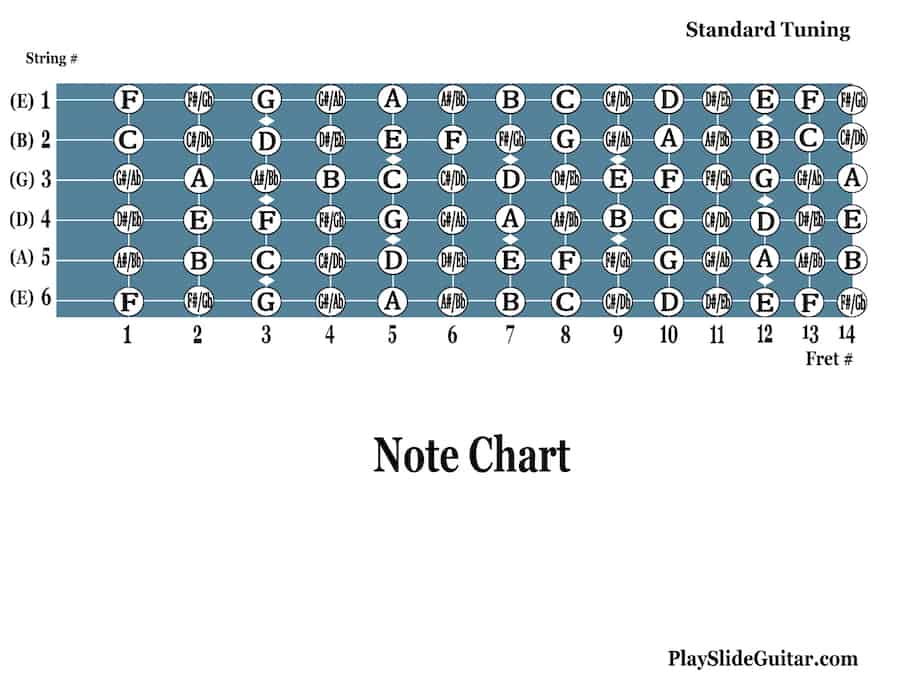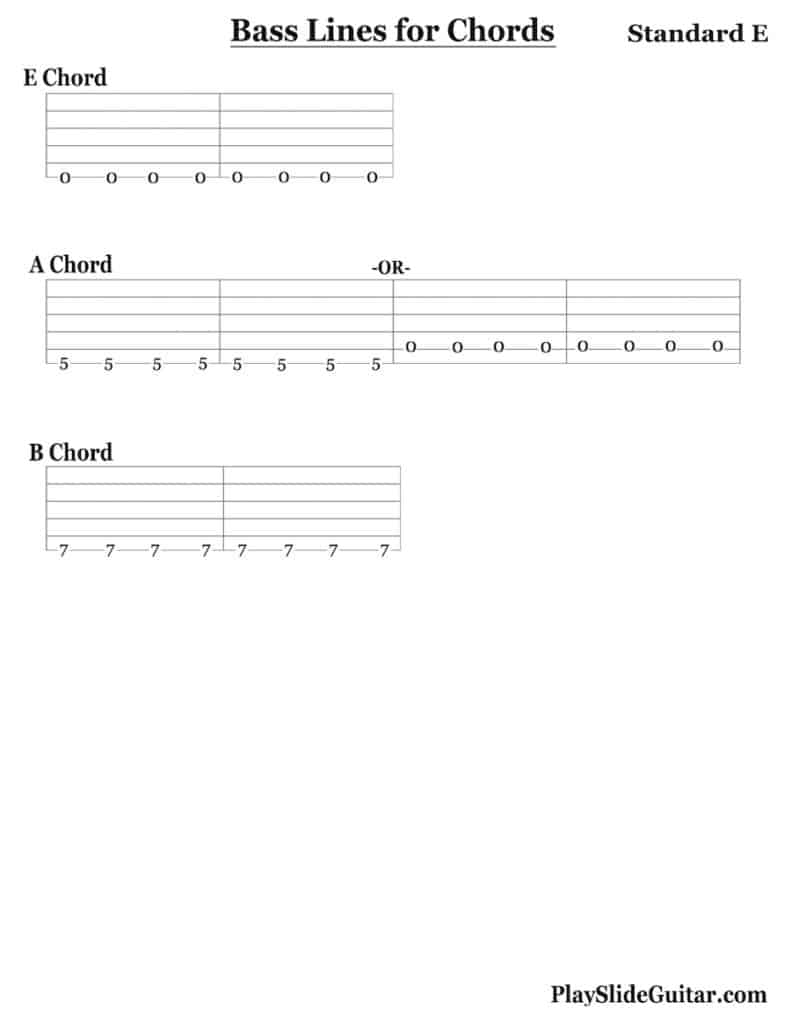Used by most guitarists for any type of music or style of playing, the standard E tuning has a lot to offer for slide guitar as well. The interval spacing of the tuning is simple and straightforward, which lends itself well to melodic and harmonic options.
Although a little less traditional for the slide guitar idiom because it isn’t an open tuning, standard E tuning is a great avenue for learning slide techniques without having to learn a new tuning.
Players such as Warren Haynes have crafted great music from using this tuning, and it also shares some commonalities with the open E tuning. Let’s take a deeper look at using the tuning for slide guitar.

Tuning
Standard E tuning will be familiar to most guitarists who have played six-string guitar, and the tuning has Perfect 4th intervals between every string, with exception to strings 3 and 2. There is a major 3rd between these strings, which ironically is the interval that open tunings thrive on for their rich and full sound of their major chords.
The highest two strings, strings 2 and 1, are actually the same notes as the open E tuning, as well as the 6th string or the low E. Without fretting notes with our fingers, standard E tuning offers less harmonic tones for a major chord in a position.
However, since all six notes of any guitar tuning aren’t usually played all at once, this doesn’t necessarily pose a hindrance to creating plenty of harmonic voicings and melodic notes.
Here’s the tuning for standard E tuning on slide guitar…
String 1 – E
String 2 – B
String 3 – G
String 4 – D
String 5 – A
String 6 – E
Also, here’s a note chart that displays the notes and tuning across the fretboard:

Playing Melodically with the Tuning
Much of the same riffs and solo work that is done on regular guitar is inherent in the tuning for slide guitar. The main difference will be applying slide techniques to your playing, and possibly not having the ability to fret notes with your fingers.
The top two strings, strings 2 and 1, are great for melodic slide playing on this tuning, as they will have a timbre that will cut through the music and catch a listener’s ears. The higher frequencies that can be produced on these two strings with the slide will separate the sound from mid frequencies that are played by other instruments and the lower strings of your guitar.
Playing melodically on the top two strings will present a more vocal-like tonality that the slide guitar is often known for, and many great techniques and playing from the slide tradition have found their way in this frequency range.
The Low End: Bass Notes
Playing bottleneck guitar unaccompanied, which is often tied to the tradition of slide playing, becomes a little different and more challenging on standard E tuning.
Most open tunings offer two root notes and a perfect fifth for the chord that is being played at a position, however standard tuning only provides perfect fourths for the three lower strings. The perfect fourth intervals are great for moving between chords in a progression, but will provide less options for playing bass in one position without fretting notes.
However, having a perfect fourth above the tonic chord in a progression, is great for moving to the 4 chord in many blues, rock, and pop progressions. This is a distinct advantage to playing over a chord progression in one position on standard E tuning when playing slide guitar.
You can still voice plenty of the guitar’s lower end in a position on the neck, when playing a steady bass rhythm for your solo bottleneck playing, by just repeating the same note on a string. When melodic playing is added to the repeating pattern, a listener’s ears will still feel a full and rich sound in their ears, especially as the melodic notes are played.
When playing in a group setting, not having as much flexibility with creating bass notes becomes more obsolete, as the bass player and other harmonic elements of the music can provide this.
Here are some tabs that display options for creating bass lines on the standard E tuning for solo bottleneck playing…

Finding Major Chords on the Tuning
As mentioned earlier, standard tuning’s lack of a full major chord in the open positions reduces the harmonic options for major chord voicings. However, there are still plenty of versatile and great ways to create major chords on the tuning.
Most notably, strings 4 through 2 provide a major chord inversion when played simultaneously, and can be a great option for finding a major chord with the slide. Without fretting notes with your fingers, this is one of the few ways to find a major third within your voicing, and still have a full major triad when playing slide on this tuning.
The major third can always be omitted if you’d like, especially if other instruments are providing harmonic elements to the music, and using other strings to voice the root and perfect fifth of the chord is beneficial for playing rhythm guitar with a slide.
Check out these examples of major chords that can be played with the tuning…
E Major Chords (The 1 Chord in the Key of E Major)

A Major Chords (The 4 Chord in the Key of E Major)

B Major Chords (The 5 Chord in the Key of E Major)

Playing Minor Chords
The same grouping of strings 4 through 2 that were useful for creating major chords are also great for voicing minor 7th chords. For instance, our G major voicing in the open position is often a great voicing for E minor chords as well.
Perhaps the greatest chordal asset of standard E tuning for slide guitar is the minor chord that is found straight in a position on strings 3 through 1. At the 12th fret, for example, we have a beautiful E minor chord voicing that is easier to play with a slide than many other string groupings.
Here are some options and examples of finding minor chords on the neck:

Utilizing This Tuning For Slide Guitar On Your Instrument
Since most guitars are setup with standard tuning, finding a guitar to use for this tuning will be relatively easy.
However, most guitars have a lower action (especially electric guitars) that isn’t always ideal for playing slide, and it can be beneficial to have your guitar setup by a professional if you intend to play slide often on it.
Some guitars naturally have an action that is already suitable for slide guitar, and adding slide techniques to them are just a matter of picking up the guitar and playing.
If you play regular guitar, then adding slide techniques to your sound and repertoire is convenient if you continue to use standard tuning: you won’t necessarily have to change your tuning or have a separate guitar.
Like many tunings for slide guitar, the standard E tuning is a great option for creating music and diving deeper into slide expression.
Check out the page below for more on slide guitar tunings…
